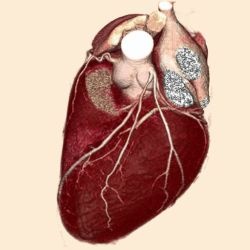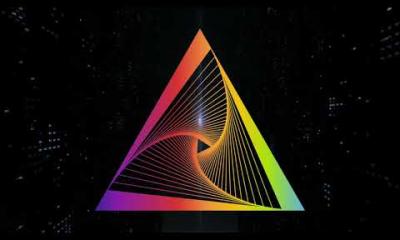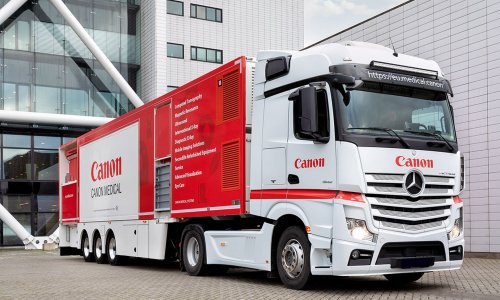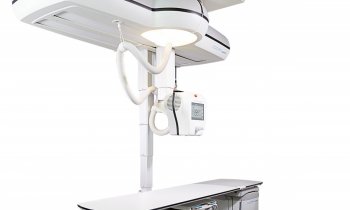Toshiba invits experts to discuss the advantages of state-of-the-art technology
Toshiba's pre-opening ECR event on Wednesday evening attracted around 120 radiological experts who wanted to learn more about the company's technology in daily practice. Toshiba invited several highly-regarded radiologists and cardiologists from Austria and Germany who not only presented the diagnostic possibilities of the firm's products offers, but answered critical questions asked by the audience. The event was the perfect preparation for this year's ECR meeting.

Benedict Prümer, MD, of the Radiological Department, Clemens Hospital in Münster, Germany, reported his experiences with Infinix i, Toshiba Medical Systems’ advanced angiography system, highlighting the notable freedom of movement due to the five axis. „The system not only offers high comfort for the radiologist, but also for the patient who can be examined from head-to-toe within one examination without being re-positioned,“ Prümer said.
Dr. Thomas Fischer, Radiological Institute of Charité, Berlin, opened the lecture round and discussed Toshiba’s new ultrasound imaging tool „Precision Imaging“, revealing several impressive images that illustrates its advanced clarity, and therefore the advanced diagnostic options.
Reports about the Vantage Titan MR-solution with its 71 cm wide gantry – perfectly suited for diffusion imaging, tumour imaging and fresh blood imaging – was another key highlight.
Prof. Patrick Rogalla, Institute of Radiology at the Charité gave new insights of the diagnostic potential of Toshiba’s flagship unit, the AquillionOne, and once again amazed the audience with brilliant CT-images acquired with 640 slices!
In the second part of the event, a very lively podium discussion, Univ.-Prof. Dr. Herbert Frank, Cardiologist at the Institute for Internal Medicine at the Ladesklinikum Tulln, Austria, Prof. Dieter Beyer, Radiologist at the Krankenhaus Porz am Rhein, Cologne, Germany, Prof. Patrick Rogalla, Univ.-Prof.Dr.Erich Sorantin, Department of Radiology, Medical University Graz, Austria and Dr. Th. Broemel, Radiological Surgeries Conradi in Hamburg, Germany, shared their experiences with the AquillionOne with the audience.
„In Cologne we have established several interdisciplinary centers during the last years, so we have a wide diagnostic range. And although the AquillionOne is used mostly in cardiology, we are able to cover all examinations required in our daily practice – with a comparable low dose. The capabilities of the technology are really convincing“, said Prof. Beyer.
The low radiation dose of the 320 slice CT is the most persuasive argument for Prof. Sorantin, a paediatric specialist at the Medical University in Graz. „Our patients sometimes weigh less than one kilogram and therefore we could not examine them with the common radiation dose. But then the question arises: Does a small child not have the same right to an excellent diagnostic examination just because of the low weight? The answer of course, is no. This is why dose reduction is so important for our work.“
Prof. Rogalla added: „One the one hand with AquillionOne no patients are excluded from any diagnostic possibilities with CT but we are also able to expand the possibilities – and receive information about perfusion, for example.”
"State-of-the-art technology is not only beneficial for University Hospitals and large clinics, but also for a private surgery. There is a strong competition between private surgeries, so we have to offer our patients medicine at its best to distinguish ourselves from the rest of the market. Furthermore, patients inform themselves about latest technologies and medical progress, so they expect the best possible treatment. And for a CT examination, they expect the lowest possible dose", explained Dr. Th. Broemel his choice for the AquillionOne.
„The progress in CT is exceptional,“ added Prof. Frank, noting the key advantages for cardiologists: „In a CT examination, we might see the morphology, function, perfusion and the vitality. Some of the technical opportunities are yet to be discovered, so I am looking forward to next year’s ECR and the results we will be able to present.“
05.03.2009
- angiography (117)
- CT (604)
- economy (1046)
- education (569)
- imaging (1629)
- markets (545)
- medical technology (1545)
- radiation protection (188)
- ultrasound (763)











